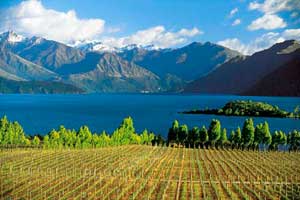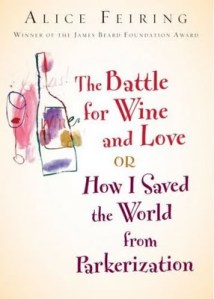Oh the much ridiculed grape from California. The grape only Californians love. The grape that Vancouverites love to hate. Well, here they were, the Zinfandel ambassadors, those pesky Americans, full of sound and fury, full of grandiloquence, celebrating their beloved Zinfandel, spreading the good news, the word, as if spreading the gospel, perhaps, being Americans, that is the way they know well, fundamentalist Christian style, even when the subject is just wine. When the issue of Primitivo being the same grape was raised, oh yes, oh they reacted like zealous keepers of the faith. It was fun to watch.
Passion, passion, a word that was pronounced again and again by the speakers, winemakers, who came to Vancouver to show us that, yes, Zinfandel can, yes it can, and it certainly does, not to the degree they would like to, but yes, I enjoyed many of the Zins tasted and for sure, I can see it as great food wine.
British Columbians will resist Zinfandel for a while. They are stuck with the image of Zin being a sweet blush cheap wine. Humans resist new things, resist change, like no other species. British Columbian humans oh they love to hate America, they love to hate Americans and things American. Perhaps because there are no discernible differences between the two cultures, the only way to set themselves apart is by negation. Anyway, going back to the subject of interest. I am certain the gospel of Zin will eventually spread, taken by the hand of Vancouver’s cuisine, which is, surprise, Asian. Zinfandel is the perfect red wine to marry the spicy, sweet, tangy, hot dishes that come from Guangdon to Hanoi, from Bangalore to Bangkok, the whole arch of far eastern cultures.
For those who dare to try:
Ironstone 2007 Old Vine. Lodi. 14.5%, 19.99.
Simple, packed with red and dark berries, spice, medium bodied juicy, easy drinking.
Ridge Lytton Springs. 2006. 14.7%. 49.99.
A dash of Syrah and a bit of Carignan make this Zin very interesting, with beau coffeeish red fruit and great acidity plus a subtle vegetal streak. Delicious, but ay, there is the rub, fifty bucks.
Ridge Three Valleys 2007 14.3%. 39.99.
It doesn’t deliver like its older sibling. The acidity sags behind the fruit and the alcohol.
Robert Biale Black Chicken 2006. Napa Valley. 15.8 %. 84.99.
A fantastic Zifandel, with great acidity, beautiful balance and structure, elegant. The price, again, goes against it.
Robert Biale Black Chicken 2007. Napa Valley. 15.8 %. 84.99.
Not as bright as its 2006 partner.
Seghesio Home Ranch. 2007. Alexander Valley. 15.5%. 49.99
Full bodied, fruit forward, velvety Zin. Yes, despite the price.
Seghesio Cortina 2006. Creek Valley, N. Sonoma. 15.2%. 49.99.
A more astringent wine that its stable mate above, a more “Italian” feeling to it. High acidity bordering with unpleasant, but then, just not crossing that line, and making it very interesting, very challenging, with a long finish, one of the stars of the show. Yes, go and get one.
 particularly Marlborough Sauvignon Blanc, New Zealand’s red wines are off the radar for the global market, with the obvious exception of Pinot Noir. The “heart break grape” has made its home in Martinborough, at the southern tip of North Island, and in Otago, in the southern end of South Island.
particularly Marlborough Sauvignon Blanc, New Zealand’s red wines are off the radar for the global market, with the obvious exception of Pinot Noir. The “heart break grape” has made its home in Martinborough, at the southern tip of North Island, and in Otago, in the southern end of South Island. 